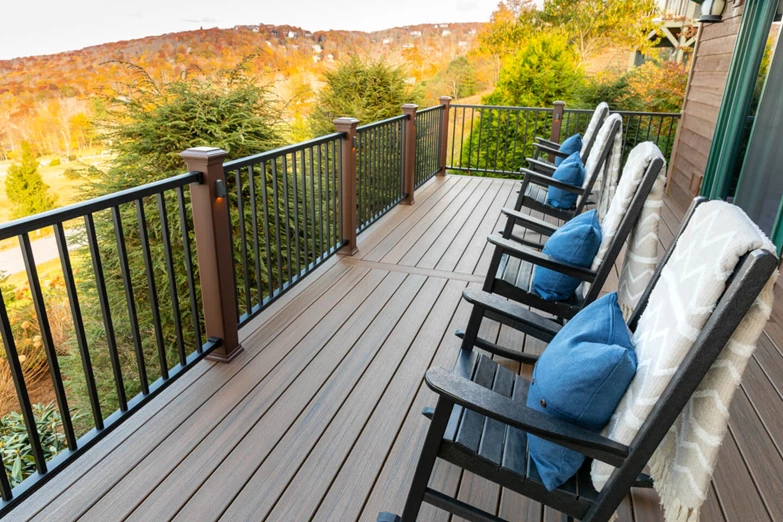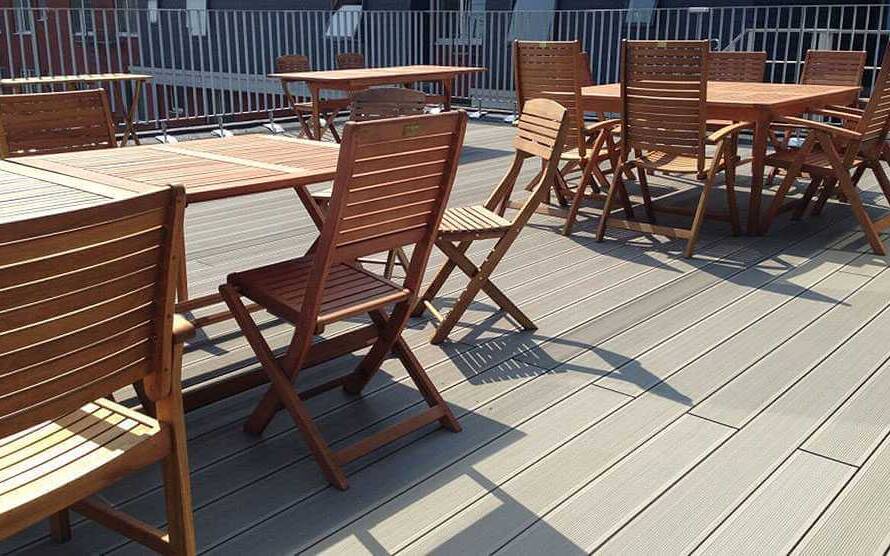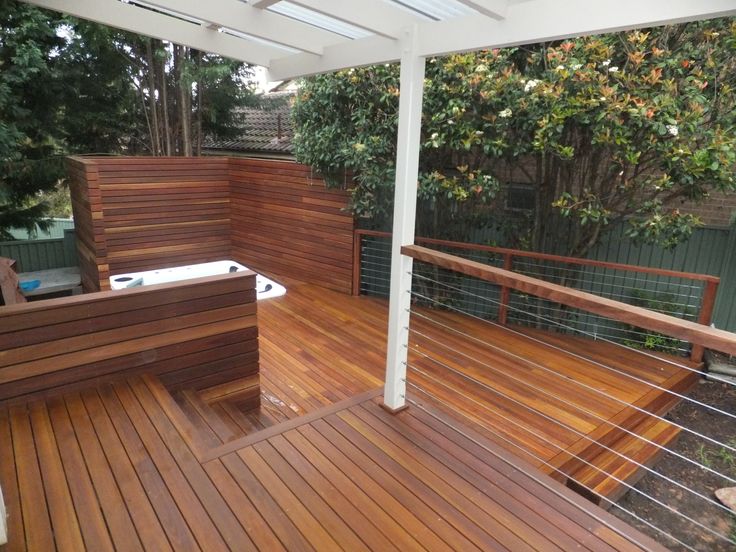It is a good idea to inspect decking regularly for any signs of deterioration. Some guidelines for how often to inspect composite decking damage:

• First,every 3-6 months – For composite decking exposed to moderate weather and use, an inspection every 3 to 6 months is recommended. Look for any loose or damaged boards, exposed composite core material, excess weathering or fading, algae or mildew buildup, or debris trapped between boards. This frequency of inspection will allow you to identify and address issues before they become more severe.
•Then, monthly – In coastal areas, high-moisture climates or for decks exposed to year-round weather, monthly inspections may be needed. The salt air, high humidity and constant weather exposure can lead to faster damage of composite materials.
• Also,after severe weather – Always inspect your composite decking after harsh weather like hurricanes, flooding, hailstorms or very heavy snowfall. Severe weather events can cause boards to loosen, crack, delaminate or collapse. Check for structural damage or safety issues after the event to ensure the deck is still stable and secure.
• In addition,annually – At a minimum, inspect your composite decking at least once per year, even if damage is not suspected. Annual inspections, along with proper cleaning and maintenance, will help you identify damage or needed repairs before it becomes critical for the safety, function or aesthetics of the deck. Look for fading, checking, tears or exposed core material and address as needed.
• Furthermore,warning signs to watch for – Some things to look for that indicate damage or a need for increased inspection frequency:
› loose, warped or damaged boards –
Also,loose boards or those with tears, splits or deep scratches should be repaired or replaced immediately.
› exposed composite core –
Next,signs of delamination where the composite layers are peeling apart exposes the inner core material. This allows moisture to penetrate deeper.
› Also,Heavy weathering/fading –
Excessive weathering, darkening or fading of the surface, especially in splotchy patterns, indicates advanced weathering damage.
› Moreover,algae or debris buildup –
Built-up grime prevents ventilation and can lead to underlying damage, decay and reduced board lifespan. Clean and re-seal the decking.
› Also,swelling around joints –
Boards that have swollen, bulged or gaped apart at the joints allow moisture to penetrate, leading to further deterioration over time. Tighten or replace damaged hardware and re-seal joints.
› Finally,visible water damage –
Areas that show signs of water damage, rot, mold or wood decay require immediate intervention to prevent a larger structural issue. Address at the source and make necessary repairs or replacements.



